Measuring techniques
We would like to show you what measurements we can perform for you.
We are happy to provide you with personal advice:
Tel.: +49 89 7459789
Email: mail@fauser.biz
Email: mail@fauser.biz
- Electrostatic fields
- Alternating electric fields
- Magnetostatic fields
- Alternating magnetic fields
- Electromagnetic waves (high frequency)
- Light
- Sound
- Radon
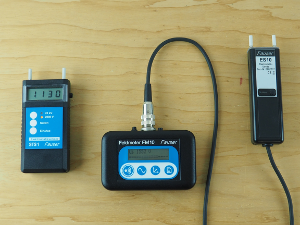
Elektrostatic fields
Electrostatics is caused by direct currents that arise in synthetic materials such as carpets, curtains, or plastic surfaces due to charge separation. It also occurs in devices that generate high voltages, such as monitors and printers, or in industrial manufacturing processes.The static electrical surface tension is measured in V (volts) and the discharge time in s (seconds).
We offer measurements using electrostatic sensors, and the discharge behavior can be documented using a discharge curve.
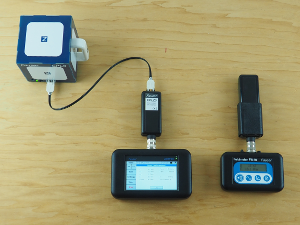
Alternating electric fields
The cause of alternating electric fields is all devices and cables that are subject to alternating voltage.The electric field strength is measured in V/m (volts per meter).
We perform potential-related and potential-free, isotropic measurements up to a frequency of 400 kHz.
In addition, spectrum analysis can be used to determine the frequencies present.
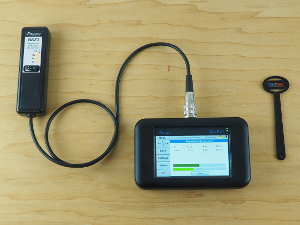
Magnetostatic fields
Magnetostatic fields occur in the vicinity of metallic materials such as spring mattresses, steel girders, and radiators.In addition, direct currents in applications such as photovoltaic systems or trams generate DC fields. Since there are strong fluctuations here, long-term recording is often advisable.
These artificial uniform fields distort the Earth's natural magnetic field. The distortion of the Earth's magnetic field is measured as a static spatial flux density deviation in µT (microtesla).
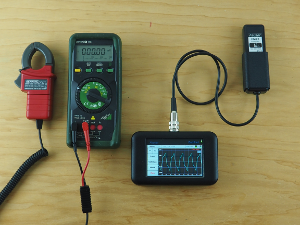
Alternating magnetic fields
Alternating magnetic fields occur wherever alternating current flows. This means in all electrical devices and cables.In addition, stray currents can also cause magnetic fields in gas and water pipes and house grounding systems.
The magnetic flux density is measured in nT (nanotesla).
We perform magnetic field measurements with isotropic field probes up to a frequency of 400 kHz, including spectrum analysis of the frequencies present.
Stray currents are measured in amperes (A) using current clamps.
Since alternating magnetic fields are subject to strong fluctuations depending on the current flow, long-term recording over at least 24 hours is often advisable.
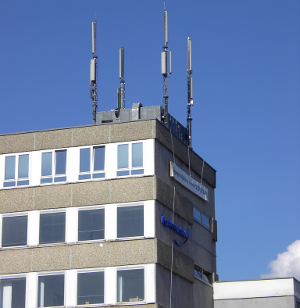
Electromagnetic waves (high frequency)
Occurs in all applications involving radio technology such as mobile communications, Wi-Fi, broadcasting, radar, etc. It also occurs as interference in electronic devices or microwave ovens.The measurement is performed using broadband RF field probes or frequency-selective spectrum analyzers to identify the source based on the frequency used.
The most common unit is radiation density in microwatts per square meter (µW/m²).
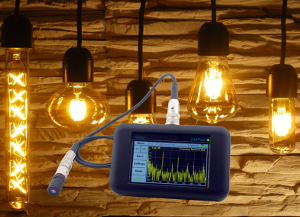
Light
Light flickering, i.e., fluctuations in light over time, can cause various health problems such as reduced vision, eye pain, concentration problems, and headaches.We offer the measurement of light sources for flicker using special flicker meters for all common limit values.
The same applies to the measurement of illuminance using a lux meter in lx (lux).
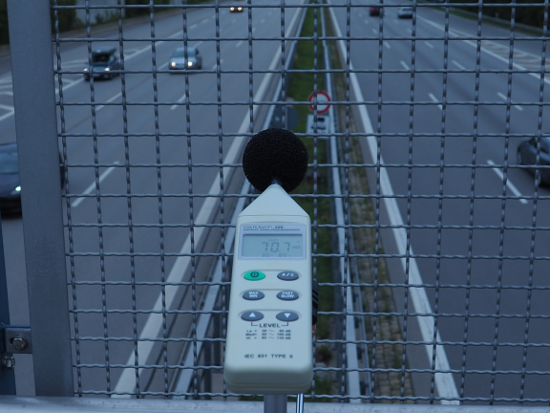
Sound
Noise can make you ill, both very high volumes and constant everyday noise/noise pollution.Measurement using sound pressure level meters in dB(A). Individual disturbing noises can be detected by means of additional frequency analysis.
Ultrasonic noises can be detected by a scanner up to 50 kHz.
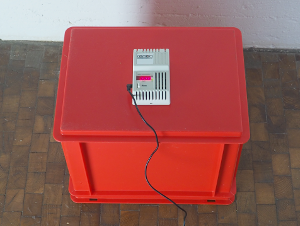
Radon
Radon is a radioactive noble gas that enters buildings from the ground. In poorly ventilated rooms, significant levels of radon can accumulate, meaning that the radioactive decay products pose a health risk.Indoor measurements are carried out using electronic radon monitors. Orientation measurements require at least two days, and the measurement is considered conclusive after a measurement period of seven days.
The standard unit of measurement for radon is Bq/m³ (becquerel per cubic meter).
The radon monitors can also be rented for your own measurements.



































 Withdrawal
Withdrawal Payment / Shipping
Payment / Shipping

 Contact
Contact Newsletter
Newsletter Product registration
Product registration

